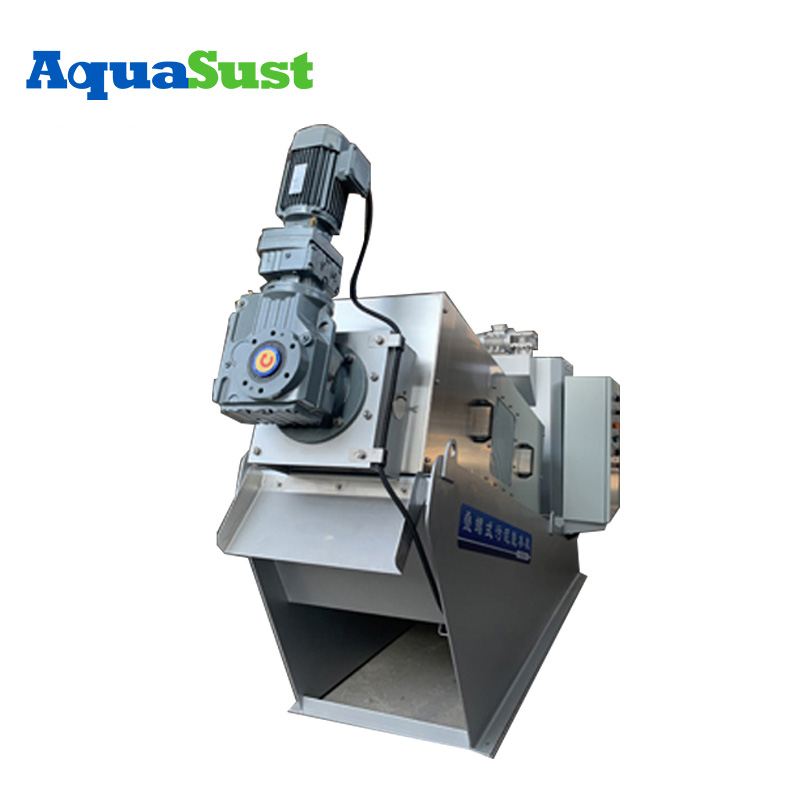 +86-15267462807
+86-15267462807

Sludge machine plays an important role in sewage treatment, but in order to maximize the role of sludge machine in sewage treatment, it needs to be optimized from multiple aspects such as design, installation, operation and maintenance. Here are some key strategies that can help maximize the performance and efficiency of sludge machine:
1. Choose the right type of sludge machine
According to the nature and treatment requirements of the sludge, choosing the right type of sludge machine (such as centrifugal dewatering machine, plate and frame filter press, belt filter press, etc.) can improve the dewatering efficiency and treatment effect. Different types of sludge machines are suitable for different sludge characteristics, so when choosing, the moisture content, viscosity and particle size of the sludge should be considered comprehensively.
2. Optimize sludge pretreatment
Sludge pretreatment has an important impact on the performance of sludge machine. By adding flocculants or adjusting the pH value, the flocculation effect of sludge can be improved and the dewatering performance of sludge can be improved. Pretreatment can make the sludge particles larger and more compact, making it easier to dewater.
3. Control feed concentration and flow rate
Maintaining a stable sludge feed concentration and flow rate can improve the dewatering efficiency and treatment effect of the sludge machine. Avoiding too high or too low feed concentration and flow rate can prevent the sludge machine from overloading or unstable operation.
4. Adjust operating parameters
Adjust the operating parameters of the sludge machine, such as rotation speed, pressure and filter belt speed, according to the sludge properties and treatment requirements. By optimizing these parameters, the dewatering efficiency and treatment effect of the sludge machine can be improved.
5. Regular maintenance and cleaning
Sludge machines are prone to accumulate sludge and impurities during long-term operation, affecting their performance. Regularly cleaning the filter belt, filter cloth and other parts of the sludge machine and keeping the equipment clean can ensure the best dewatering effect. In addition, regular inspection and maintenance of key components of the sludge machine and timely repair or replacement of damaged components can extend the service life of the equipment.
6. Use efficient flocculants
Selecting and using efficient flocculants can significantly improve the flocculation effect of sludge and improve the dewatering performance of the sludge machine. Different types of sludge have different requirements for flocculants. Optimizing the type and dosage of flocculants can improve the treatment efficiency and effect.
7. Combined with other treatment processes
The sludge machine can be used in combination with other treatment processes, such as concentration, stabilization and drying. By concentrating the sludge before dewatering, the sludge volume can be reduced and the dewatering efficiency can be improved. In addition, combined with the sludge stabilization and drying processes, the sludge volume and weight can be further reduced, and the treatment and disposal costs can be reduced.
8. Introducing automation and intelligent control
The use of automation and intelligent control technology can improve the operating efficiency and stability of the sludge machine. By installing online monitoring equipment, the properties and treatment effects of the sludge can be monitored in real time, and the operating parameters and flocculant dosage can be automatically adjusted to ensure that the sludge machine operates in the best condition.
9. Train operators
Ensure that operators have sufficient knowledge and skills to properly operate and maintain the sludge machine. Regular training to improve the professional level of operators can avoid equipment failures and performance degradation caused by improper operation.
10. Design a reasonable sludge discharge system
Reasonably design the sludge discharge system to ensure that the dehydrated sludge can be discharged and disposed of in a timely and effective manner. Use automatic sludge discharge devices or regular manual sludge discharge to keep the sludge machine running continuously.
11. Optimize sludge transportation and storage
Design a reasonable sludge transportation and storage system to ensure that the dehydrated sludge can be efficiently transported and safely stored. Avoiding secondary pollution and waste during the treatment process can improve the overall treatment efficiency.